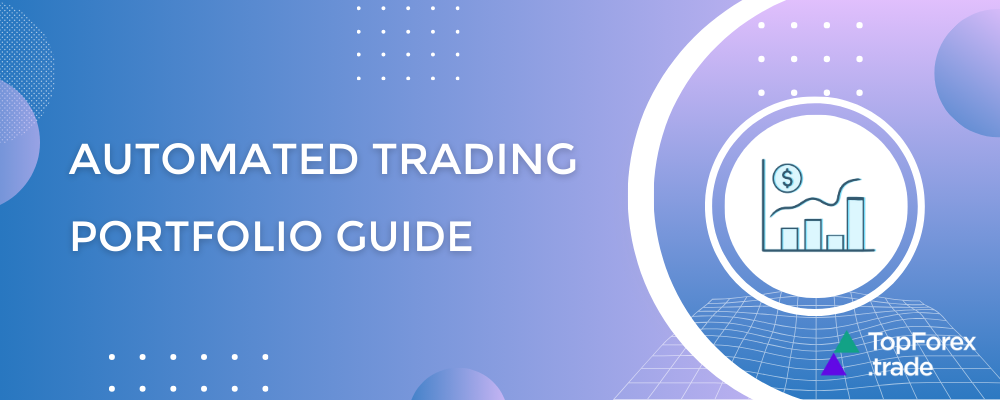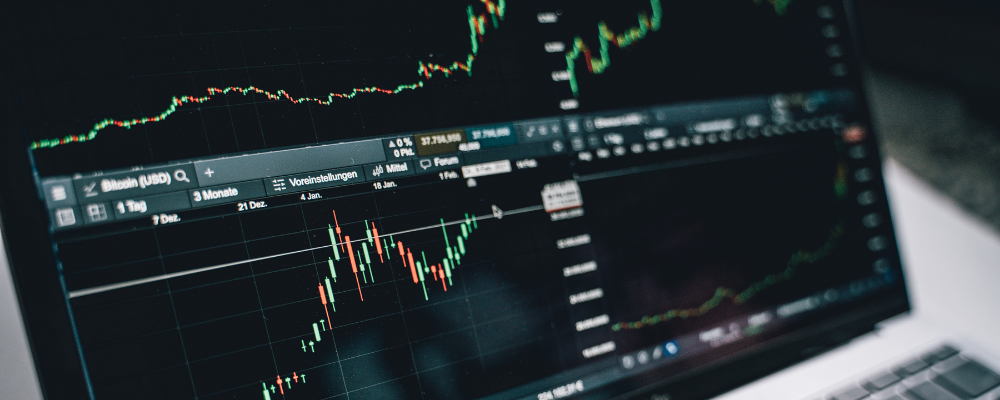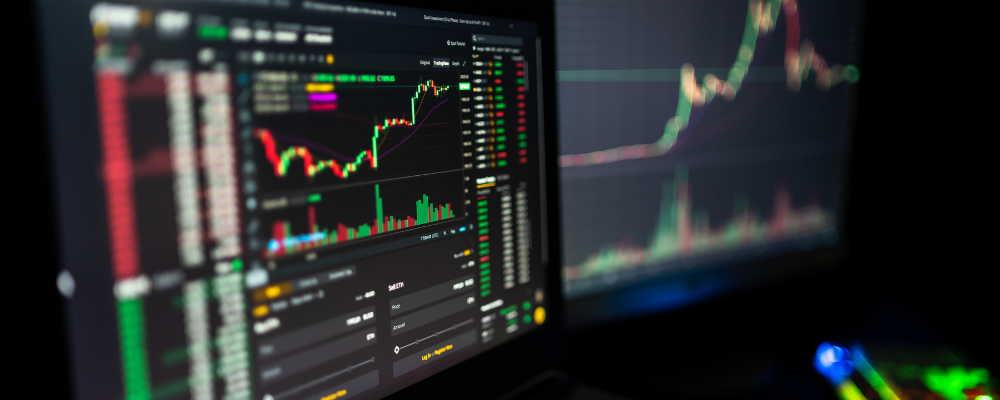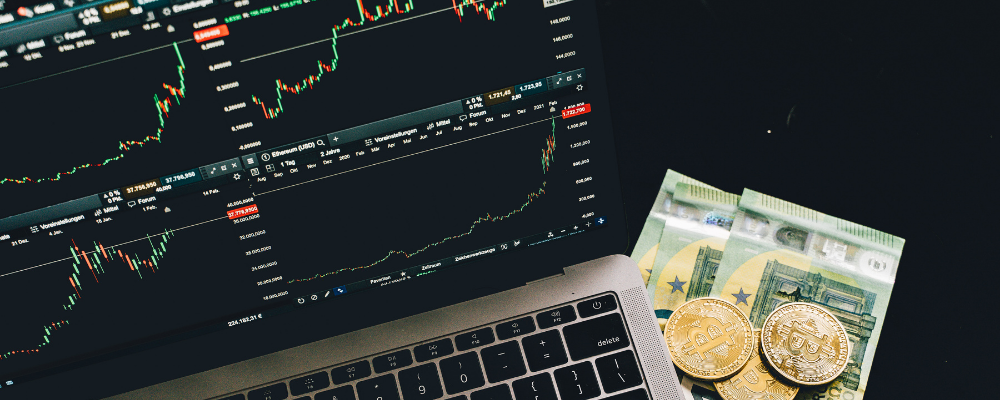Automated trading portfolio guide: diversify your strategies for better results

Automated trading allows traders to execute strategies with precision and speed, but relying on just one strategy can be risky. By building a diversified portfolio of automated trading strategies, you can spread risk, adapt to changing market conditions, and enhance overall performance. In this article, we’ll walk through the essential steps to designing a well-balanced and effective automated trading portfolio.
What is an automated trading strategy?
An automated trading strategy is a set of predefined rules that a computer program follows to buy and sell financial instruments without human intervention. These strategies operate based on technical indicators, price patterns, or market conditions.
Instead of manually entering and exiting trades, traders use automated systems (also called trading bots or Expert Advisors) to execute trades automatically.
➡ Check out: How to use bots in FX and CFD trading
Instruments for an automated trading strategy

Not all markets are equally suited for automation. Here are some common financial instruments that work well with automated strategies:
💰 Forex (currency pairs) – High liquidity, suitable for trend-following and scalping strategies.
📈 Stocks and ETFs – Often require fundamental filters alongside technical automation.
🔶 Commodities – Trend-following and breakout strategies work well due to macroeconomic influence.
🟠 Cryptocurrencies – Highly volatile, ideal for momentum and arbitrage strategies.
📊 Indices – Trend-following and breakout strategies are commonly applied.
Strategies for an automated trading
A good portfolio includes a mix of different automated trading strategies to handle different market conditions.
📉 Trend-following strategies (best for strong trends)
-
Uses indicators like Moving Averages (EMA, SMA) and MACD crossovers.
-
Works well in trending markets but can struggle in sideways movement.
-
✅ Example: Buy when the 50 EMA crosses above the 200 EMA (Golden Cross).
📈 Mean-reversion strategies (best for sideways markets)
-
Identifies overbought/oversold conditions using RSI or Bollinger Bands.
-
Profitable when price repeatedly returns to an average value.
-
✅ Example: Buy when RSI drops below 30, sell when RSI goes above 70.
➡ Forex mean reversion explained
⚡ Scalping strategies (best for fast-paced trading)
-
Uses very small price movements for quick profits.
-
Requires a high-speed execution platform like MetaTrader or cTrader.
-
✅ Example: Buy when price bounces off VWAP (Volume Weighted Average Price).
🚀 Breakout strategies (best for volatile markets)
-
Looks for strong price movements outside a defined range.
-
Works well during major news releases or session openings.
-
✅ Example: Buy when price breaks above the previous day’s high with strong volume.
💹 Arbitrage strategies (best for market inefficiencies)
-
Takes advantage of price differences between exchanges.
-
Works well in crypto trading where spreads vary.
-
✅ Example: Buy EUR/USD at 1.1005 on Broker A and sell it at 1.1003 on Broker B, making a 2-pip profit.
Tools and platforms for automated trading

To implement and test automated trading strategies, traders use specialized tools and platforms:
-
MetaTrader 4/5 (MT4/MT5) – Popular for Forex trading bots, supports custom Expert Advisors (EAs).
-
cTrader – Advanced automation features with a powerful algorithmic trading framework.
-
TradingView Pine Script – Ideal for backtesting and scripting custom trading indicators.
-
NinjaTrader – Suitable for futures and stock trading automation.
-
Python & API Trading – Custom trading bots for advanced users.
Portfolio allocation and risk management
A well-diversified automated trading portfolio should balance risk across different strategies and assets.
✅ Best practices for risk management:
-
Allocate capital across different strategies. (e.g., 30% trend-following, 30% mean-reversion, 40% scalping).
-
Set a stop-loss and take-profit level for every trade.
-
Avoid high correlation between strategies (e.g., don’t trade multiple trend-following strategies on EUR/USD).
-
Use position sizing rules – Risk only 1-2% per trade.
Forex trend-following automated trading strategy – EUR/USD

Objective: Our goal is to use a trend-following strategy that buys when the market is in an uptrend and sells when it’s in a downtrend. We will use the Exponential Moving Average (EMA) to identify the trend, and the MACD (Moving Average Convergence Divergence) for confirmation.
Step 1️⃣: Define the strategy setup
Indicators used:
-
50-period Exponential Moving Average (50 EMA):
-
The 50 EMA helps us identify the medium-term trend. If the price is above the 50 EMA, it indicates an uptrend, and if the price is below the 50 EMA, it indicates a downtrend.
-
-
200-period Exponential Moving Average (200 EMA):
-
The 200 EMA is used to confirm the overall market trend. If the 50 EMA is above the 200 EMA, it’s considered an uptrend. If the 50 EMA is below the 200 EMA, it’s a downtrend.
-
-
MACD (12, 26, 9):
-
The MACD helps us confirm entry signals. A MACD crossover occurs when the MACD line (the difference between the 12-period and 26-period EMAs) crosses above or below the signal line (9-period EMA). This can indicate momentum in the direction of the trend.
-
Trade entry rules:
-
Buy signal:
-
The 50 EMA crosses above the 200 EMA (Golden Cross), indicating an uptrend.
-
The MACD line crosses above the signal line, confirming upward momentum.
-
Enter the buy order when the candle closes after the MACD crossover.
-
-
Sell signal:
-
The 50 EMA crosses below the 200 EMA (Death Cross), indicating a downtrend.
-
The MACD line crosses below the signal line, confirming downward momentum.
-
Enter the sell order when the candle closes after the MACD crossover.
-
Step 2️⃣: Define risk management and position sizing
Risk management settings:
-
Stop-loss (SL): 50 pips.
-
The stop-loss is placed 50 pips away from the entry point to limit potential losses.
-
-
Take-profit (TP): 100 pips.
-
The take-profit target is set at a 2:1 reward-to-risk ratio, meaning you aim to make 100 pips for every 50 pips of risk.
-
Position sizing:
-
Risk per trade: 2% of total account balance.
-
If the account balance is $10,000, risk per trade = $200. If the stop-loss is 50 pips, you will calculate the appropriate position size based on this risk.
-
To calculate position size:
Position Size = (Pip Risk × Pip Value) / Account Risk = (50 × 10) / 200 = 0.4 lots
-
Lot Size: 0.4 lots (equivalent to 40,000 units of the base currency).
Step 3️⃣: Setting up the automated trading bot
Now that the strategy is defined, you can set up the trading bot using a platform like MetaTrader 4/5 or cTrader.
-
Create a Custom Expert Advisor (EA) or use TradingView’s Pine Script to automate the process. The script will:
-
Monitor the price for the EMA crossovers (50 EMA crossing the 200 EMA).
-
Confirm the MACD crossover to validate the signal.
-
Place buy or sell orders according to the rules outlined above.
-
-
Backtest the strategy:
-
Use historical data to backtest the strategy. This helps you see how the strategy would have performed in the past and fine-tune the parameters (like the EMAs or the stop-loss level).
-
Look for metrics such as win rate, drawdown, and profit factor to assess the strategy’s performance.
-
Step 4️⃣: Example of a live trade
Trade 1: Buy order
-
Date: April 12, 2025
-
Market conditions:
-
The 50 EMA crosses above the 200 EMA, indicating an uptrend (Golden Cross).
-
The MACD line crosses above the signal line, confirming upward momentum.
-
-
Entry price: 1.0950 (after the close of the candle that confirms the MACD crossover).
-
Stop-loss: 1.0900 (50 pips below entry).
-
Take-profit: 1.1050 (100 pips above entry).
Result:
-
Price moves upwards to 1.1050.
-
The trade hits the take-profit level at 1.1050.
-
Profit: 100 pips x 0.4 lots = $400 (minus commissions and fees).
Trade 2: Sell order
-
Date: April 15, 2025
-
Market conditions:
-
The 50 EMA crosses below the 200 EMA, indicating a downtrend (Death Cross).
-
The MACD line crosses below the signal line, confirming downward momentum.
-
-
Entry price: 1.1000 (after the close of the candle that confirms the MACD crossover).
-
Stop-loss: 1.1050 (50 pips above entry).
-
Take-profit: 1.0900 (100 pips below entry).
Result:
-
Price moves down to 1.0900.
-
The trade hits the take-profit level at 1.0900.
-
Profit: 100 pips x 0.4 lots = $400 (minus commissions and fees).
Step 6️⃣: Monitoring and adjusting the portfolio
After executing multiple trades, you should regularly monitor the performance of your strategy:
-
Check for drawdowns:
If the strategy hits a drawdown (a series of losing trades), evaluate whether the market conditions have changed or if the strategy needs adjustments. -
Diversify strategies:
While this example focuses on trend-following, it’s essential to diversify by using other strategies like mean-reversion or scalping in your portfolio to protect against market fluctuations.
Top Forex brokers for automated trading
Automated trading requires fast execution, minimal slippage, and reliable platforms. These top brokers provide the best conditions for trading bots, EAs, and algorithmic strategies.
HF Markets (HFM) – best for EAs and low-latency trading
✅ MetaTrader 4/5 with full EA support
✅ VPS hosting for 24/7 automated trading
✅ Tight spreads and fast execution to reduce slippage
✅ Deep liquidity for seamless order flow
📌 Why choose HF Markets? Perfect for traders running expert advisors (EAs) who need reliable execution and minimal downtime.
Exness – best for scalping bots and high-leverage strategies
✅ Ultra-fast execution (milliseconds)
✅ Unlimited leverage for advanced strategies
✅ Low slippage and stable trading environment
✅ Supports API trading and algorithmic bots
📌 Why choose Exness? Ideal for traders using high-frequency trading (HFT) bots or scalping strategies that need lightning-fast execution.
AvaTrade – best for automated Copy trading
✅ AvaSocial and DupliTrade for effortless copy trading
✅ Full MT4/MT5 compatibility for automated trading
✅ Fixed and floating spreads to suit different strategies
✅ Regulated and reliable for secure trading
📌 Why choose AvaTrade? If you want automated trading without coding, copy pro traders with AvaSocial or DupliTrade.
eToro – best for hands-free Copy trading
✅ Industry-leading social trading platform
✅ CopyTrader™ lets you mirror top traders automatically
✅ Supports API trading for algorithmic strategies
✅ Strong regulation and beginner-friendly interface
📌 Why choose eToro? Want a set-it-and-forget-it approach? Copy experienced traders and let automation handle the rest.
Risk disclaimer: eToro is a multi-asset platform which offers both investing in stocks and cryptoassets, as well as trading CFDs.
CFDs are complex instruments and come with a high risk of losing money rapidly due to leverage. 51% of retail investor accounts lose money when trading CFDs with this provider. You should consider whether you understand how CFDs work, and whether you can afford to take the high risk of losing your money.
This communication is intended for information and educational purposes only and should not be considered investment advice or investment recommendation. Past performance is not an indication of future results.
Copy Trading does not amount to investment advice. The value of your investments may go up or down. Your capital is at risk.
Don’t invest unless you’re prepared to lose all the money you invest. This is a high-risk investment and you should not expect to be protected if something goes wrong. Take 2 mins to learn more.
eToro USA LLC does not offer CFDs and makes no representation and assumes no liability as to the accuracy or completeness of the content of this publication, which has been prepared by our partner utilizing publicly available non-entity specific information about eToro.
BlackBull Markets – best for institutional-grade algorithmic trading
✅ FIX API support for professional traders
✅ Low-latency execution and deep liquidity
✅ Compatible with trading bots and custom scripts
✅ Strong infrastructure for algo trading
📌 Why choose BlackBull Markets? If you’re running complex trading algorithms or HFT strategies, BlackBull Markets provides institutional-grade execution.
Which FX broker is best for you?
-
Want to run expert advisors (EAs)? → ✅ HF Markets
-
Need fast execution for scalping bots? → ✅ Exness
-
Running institutional-grade trading bots? → ✅ BlackBull Markets
No matter your automated trading strategy, these brokers offer the best execution, technology, and support.
Related articles:
FX automated trading - FAQ